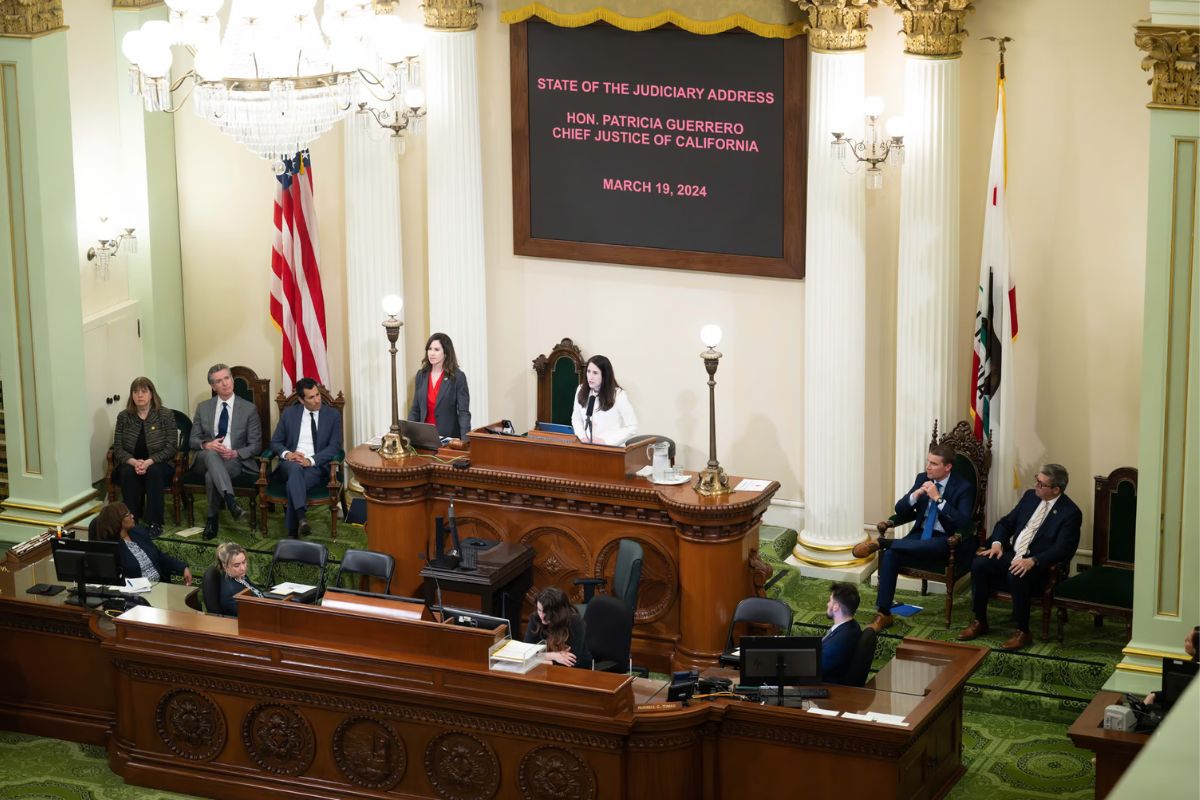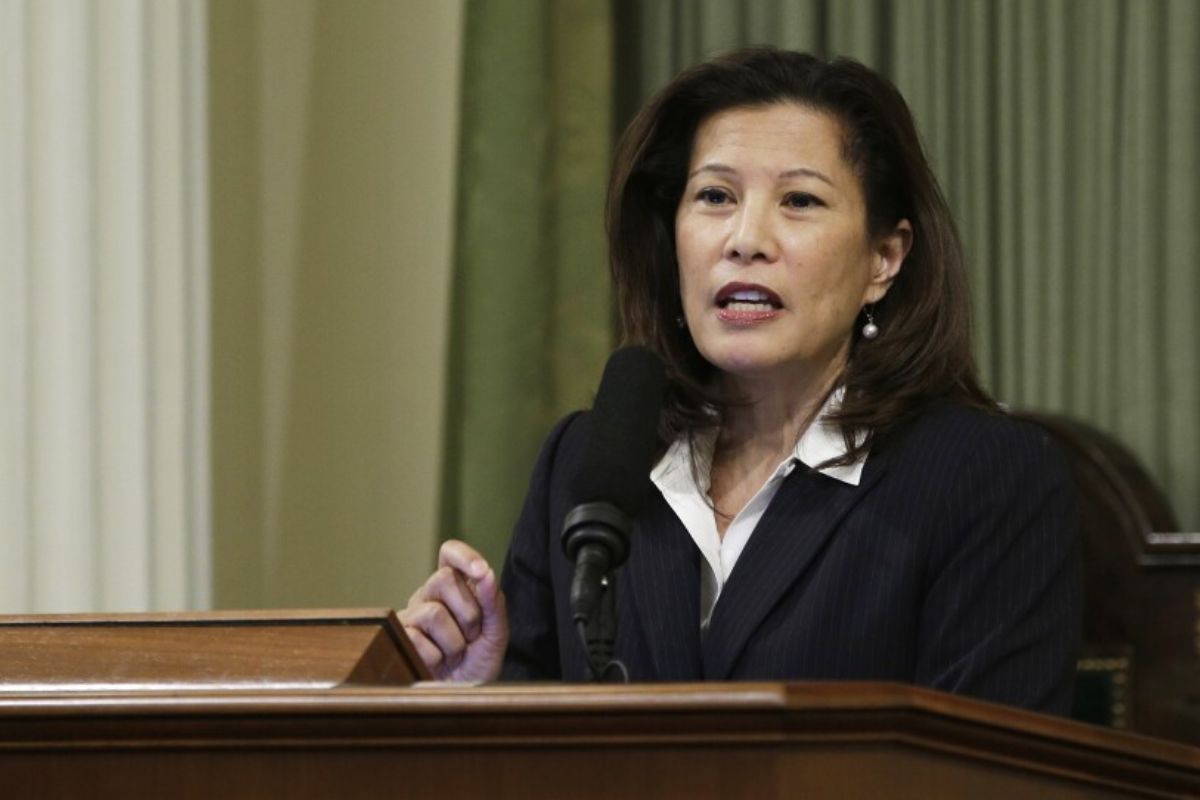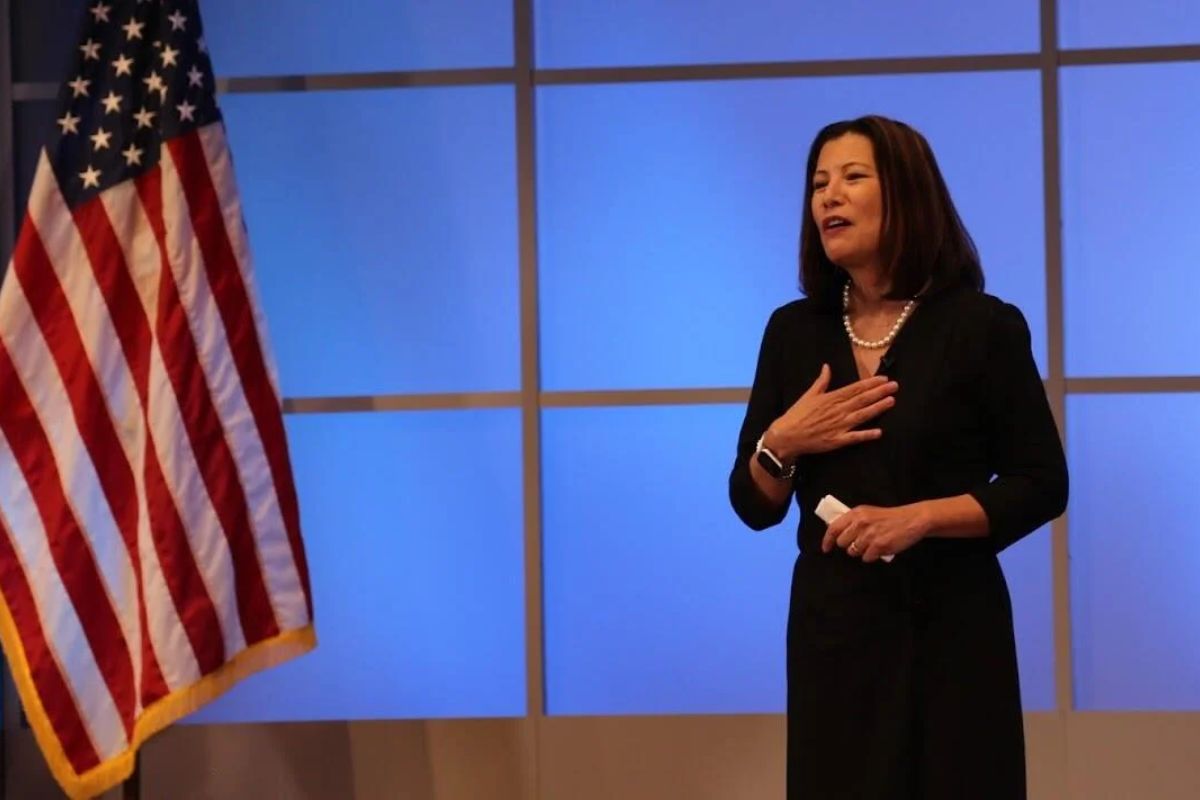California Top Judge Unveils State of Judiciary: The Judiciary Chief’s annual address disclosed key initiatives for enhancing California legal system. Programs focus on improving access to justice for all, expanding self-help centers, and boosting diversity and inclusivity. Efforts include diversity training, modernizing court operations with technology, and addressing fiscal challenges while ensuring judicial needs are met efficiently. Integration of AI aims to streamline processes, with a commitment to civic engagement, transparency, efficiency, and equality. Measures like promoting civic participation, simplifying legal processes, and providing language assistance highlight the judiciary’s dedication to just practices. Discover more about the impactful updates shared in the address.
Chief Justice Address Highlights Judiciary Programs
The annual address delivered by California’s Chief Justice Patricia Guerrero to the state Legislature showcased the judiciary’s commitment to highlighting and advancing various key programs within the legal system. Chief Justice Guerrero emphasized the importance of initiatives aimed at improving access to justice for all Californians, regardless of their background or socioeconomic status. One of the highlighted programs is the expansion of self-help centers in courthouses across the state, providing essential resources and guidance to individuals moving through the legal system without legal representation.
Furthermore, Chief Justice Guerrero underscored the significance of programs focused on enhancing diversity and inclusivity within the judiciary. She stressed the importance of ensuring that the court system reflects the rich diversity of California’s population to promote trust and confidence in the judicial process. Initiatives such as diversity training for judges and court staff, as well as outreach efforts to underrepresented communities, were highlighted as vital steps towards achieving a more inclusive and equitable legal system.
In her address, Chief Justice Guerrero also acknowledged the ongoing efforts to modernize court operations through technology. The implementation of e-filing systems, virtual courtrooms, and online dispute resolution platforms were discussed as key components of the judiciary’s commitment to improving efficiency and accessibility for all Californians seeking justice.
Fiscal Challenges and Judicial Support
Amid California’s substantial budget deficit, how is Chief Justice Guerrero maneuvering fiscal challenges while maintaining essential judicial support? Guerrero, in her annual address, expressed gratitude for Governor Gavin Newsom’s financial support to the judicial branch. She emphasized the importance of the judiciary playing a part in addressing the statewide budget deficit while still upholding vital programs and services. To provide a clearer overview of Chief Justice Guerrero’s strategies in handling fiscal challenges and supporting the judicial system, the following table outlines key points discussed in her address:
| Fiscal Challenges | Judicial Support |
|---|---|
| Acknowledgment of California’s budget deficit | Gratitude for Governor Newsom’s financial support |
| Need for judiciary to contribute to deficit | Emphasis on maintaining essential programs and services |
| Strategies to navigate fiscal challenges | Ensuring continued access to justice for all |
| Balancing budget constraints with judicial needs | Collaboration with stakeholders for sustainable solutions |
| Innovation in resource allocation for efficiency | Commitment to upholding the rule of law |
In facing these challenges, Chief Justice Guerrero is focused on striking a balance between fiscal responsibility and maintaining the integrity and effectiveness of the judicial system.
Embracing Modernization and AI
Chief Justice Guerrero’s focus on modernization extends to embracing the integration of artificial intelligence (AI) within the judiciary, emphasizing the importance of maneuvering the opportunities and challenges presented by AI to safeguard the integrity of the judicial process. The judiciary’s efforts towards modernization reflect a proactive stance in leveraging technological advancements to enhance efficiency and effectiveness in delivering justice. By incorporating AI into judicial processes, the judiciary aims to streamline operations, improve decision-making processes, and guarantee timely resolution of cases.
AI technology offers the judiciary the potential to automate routine tasks, analyze vast amounts of legal data swiftly, and identify patterns that may assist in legal reasoning. However, alongside these opportunities, challenges such as data privacy, algorithmic bias, and ethical considerations must be carefully navigated to uphold the principles of fairness, transparency, and accountability within the justice system.
To address these challenges, Chief Justice Guerrero underscores the significance of implementing robust governance frameworks, ensuring the ethical use of AI, and fostering a deep understanding of AI technologies among legal professionals. Embracing modernization through AI integration requires a balanced approach that maximizes the benefits of technology while mitigating potential risks, ultimately serving the overarching goal of upholding the rule of law and preserving judicial integrity.
Focus on Civic Engagement and Access to Justice
Highlighting the judiciary’s commitment to community engagement and equitable legal access, Guerrero emphasizes initiatives focused on promoting civic participation and ensuring justice accessibility. Through programs like civic learning awards for schools and judges in the classroom, the judiciary is actively engaging with the community to foster a better understanding of the legal system. By recognizing and rewarding schools that excel in teaching civic education and by having judges interact directly with students, these initiatives aim to bridge the gap between the legal system and the public.
Moreover, Guerrero’s emphasis on civic engagement extends to ensuring access to justice for all individuals. The judiciary is working on implementing measures to make the legal system more accessible and understandable for everyone, regardless of background or circumstances. This includes initiatives to simplify legal processes, provide language assistance where needed, and offer resources to support individuals in maneuvering the complexities of the legal system.
Commitment to Transparency, Efficiency, and Equality
The judiciary’s unwavering dedication to transparency, efficiency, and equality is exemplified through Chief Justice Guerrero’s emphasis on fostering a fair and accessible legal system for all Californians. Guerrero highlights the ongoing efforts to enhance transparency, streamline processes for increased efficiency, and guarantee the quality of judicial proceedings remains paramount. In addition, the Chief Justice reaffirms the judiciary’s commitment to combatting racism and inequality within the legal system, pledging to work towards achieving equal justice for every individual in California.
To provide a clearer overview of the judiciary’s commitment to transparency, efficiency, and equality, the table below outlines key initiatives highlighted in Chief Justice Guerrero’s address:
| Initiative | Description |
|---|---|
| Transparency Enhancement | Implementing measures to make court proceedings and decisions more accessible to the public. |
| Efficiency Improvement | Introducing streamlined procedures to expedite the legal process without compromising quality. |
| Quality Maintenance | Ensuring that high standards are upheld in all judicial proceedings to promote fair outcomes. |
| Equality Promotion | Taking steps to address issues of racism and inequality, working towards equal justice for all. |
This table encapsulates the multifaceted approach undertaken by the judiciary under Chief Justice Guerrero’s leadership to uphold transparency, efficiency, and equality within California’s legal system.
ALSO READ: McCovey Statue Epic Comeback: New Spot Across Oracle!
News in Brief
California Chief Justice Patricia Guerrero outlined key initiatives aimed at enhancing the state’s legal system during her annual address to the state Legislature. Emphasizing the importance of improving access to justice, Guerrero highlighted programs focused on expanding self-help centers and promoting diversity and inclusivity. She addressed fiscal challenges, expressing gratitude for Governor Newsom’s support while emphasizing the need to maintain essential judicial services. Guerrero also discussed the integration of artificial intelligence (AI) to streamline processes and ensure transparency and efficiency. Additionally, she underscored initiatives to promote civic engagement and ensure access to justice for all Californians, reaffirming the judiciary’s commitment to transparency, efficiency, and equality. Guerrero’s address reflects a comprehensive approach to advancing justice and inclusivity in California.
Our Reader’s Queries
What does the Chief Justice of California do?
Despite overseeing the nation’s largest state judiciary, serving as chair of the Judicial Council, and adjudicating cases alongside six Supreme Court colleagues, Chief Justice Guerrero prioritized discussing her goals and priorities.
How long do California Supreme Court Justices serve?
The State Bar’s Commission on Judicial Nominees Evaluation conducts thorough investigations and assessments of potential nominees’ backgrounds and qualifications. Upon the conclusion of their 12-year terms, California Supreme Court and Court of Appeal justices are succeeded by nominees appointed by the Governor.
What judicial powers does California’s governor have?
The Governor of California holds supreme executive authority, with the power to appoint positions within the executive branch and make judicial appointments, pending approval from the Legislature. The legislative branch serves as the State’s primary law-making authority.



